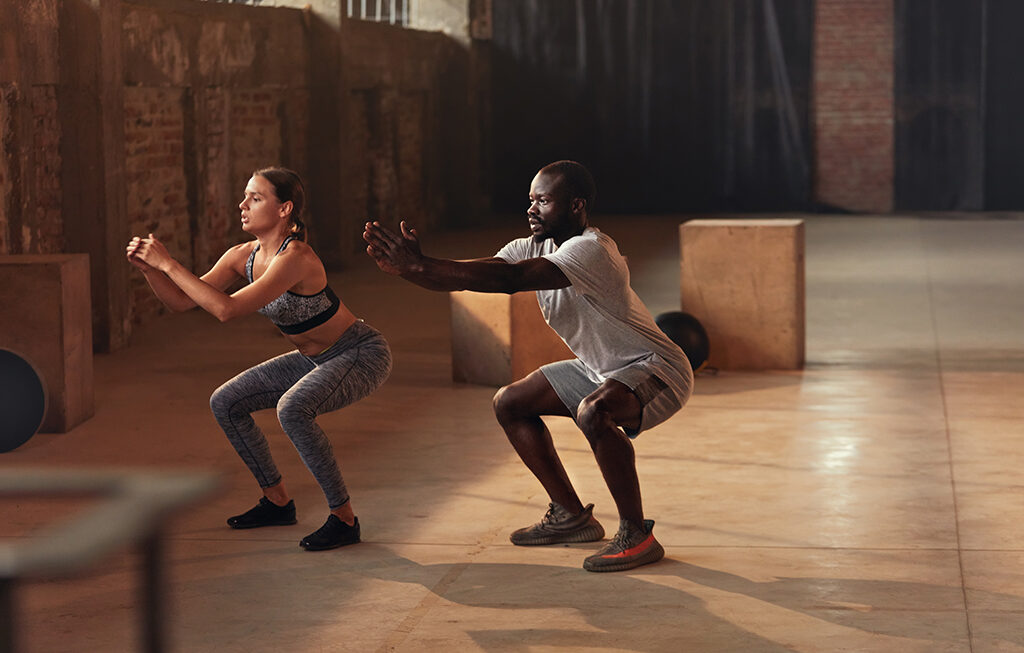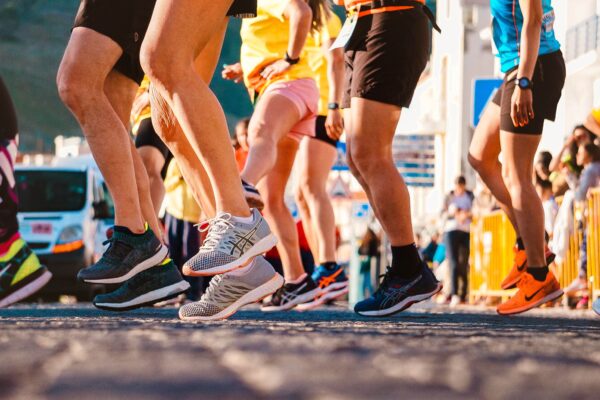Functional movement exercises help make day-to-day tasks easier like bending and lifting. This tip focuses on how squats improve functional movement.
Squats are an excellent form of functional movement because they help build strength in your lower body, primarily the quadriceps and glutes, but also the hamstrings, calves, abdominal muscles, and spinal erectors.
Everyone will have a slightly different change in their squat form due to their level of strength, range of motion, and muscle activation. Remember, utilizing correct form and posture is most important and only do what your body allows you to do. Listen to your body, and take breaks, if needed.
Squat tips and variations:
- Keep your legs hip to shoulder width apart with toes slightly turned out (between 5 and 15 degrees). Always keep your knees from going out past your toes – imagine sitting in a chair so your glutes get pushed back. Aim your thighs to be parallel with the floor. Keep weight towards the heel but keep weight steady throughout balls of feet as well.
- Practice going into this position and carefully stand back up then repeat. Focus on slow movement to learn proper form. If needed, place a chair behind you so you don’t fall. Once you can perform this with ease, continue without the chair.
- Try a wider stance, a sumo squat, which keeps your hips externally rotated.
- Try adding a resistance band or holding a dumbbell for a more advanced squat.
References:
https://www.ncbi.nlm.nih.gov/pmc/articles/PMC6033510/https://www.healthline.com/health/fitness/squats-for-glutes?slot_pos=article_2&utm_source=Sailthru%20Email&utm_medium=Email&utm_campaign=womenswellness&utm_content=2021-07-08&apid=37287323&rvid=a2e19903a17aea29e0e637faa77b683317cecb493c32185d6e7d534d1a39cf06#squat-variations


